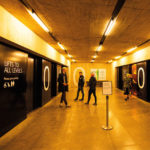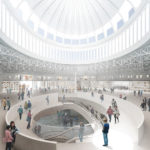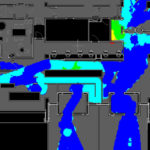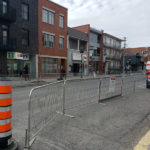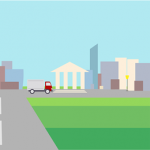Coming up to almost a year since the UK first went into lockdown, we’ve observed how the virus has quickly changed not only our travel patterns, but more broadly the way we navigate public spaces. Indoor cultural institutions such as museums have been particularly hard hit with capacities being reduced by 25 – 50%1.
Challenges vary from implementing safe physical distancing to reimagining how the space itself can be adapted for more seamless visitor movements. The biggest difficulty perhaps is the recognition that each space is unique and cannot be solved with a ‘one-size-fits-all’ approach.
So how can museums best address these challenges?
- Understand how people move through spaces, both internally and externally. Much useful information can be gathered through conversations with front-of-house staff who have direct interactions with the museum space for a clear and nuanced knowledge of how the area functions.
- Consider how movement is generated. Based on our experience with many leading cultural institutions, such as the British Museum and Tate Modern, surveys can capture how movement is generated and fluxes throughout. Instead of simply using the room’s dimensions to determine capacity, a bespoke study will include wider factors such as exhibition content and audience group. For instance, certain parts of an exhibition may have a longer viewing time and require a more staggered movement.
- Use crowd and pedestrian modelling to look at optimum layouts and capacities for people to enjoy their visit confidently and safely. An experienced modeller can experiment with pedestrian densities and flow rates in line with social distancing guidance and illustrate the results using visual tools such as videos, simulations and heat maps. Visualising data in this way is a great way to find the best (and bespoke) solution for each individual space.
- Introduce high-level wayfinding tactics to facilitate the proposed visitor movements and ensure the guidance is clear and easy to follow. Starting with queueing requirements for timed ticketed entries through to managing transitions between galleries and services, such as cafes and giftshops, these measures will futureproof the space, particularly whilst the pandemic continues.
- Looking further ahead, think about revised travel plans to accommodate the changing methods of travel that are forecasted. In particular, we must think about the decrease in car travel and increased cycling and micro mobility options (such as e-scooters) and how museums can adapt to the greater need for cycle or micro mobility parking provision and active travel connectivity.
We look forward to working with our clients in these incredible spaces, to ensure their resilience now – but also so that their potential can be realised and extended well into the future.
